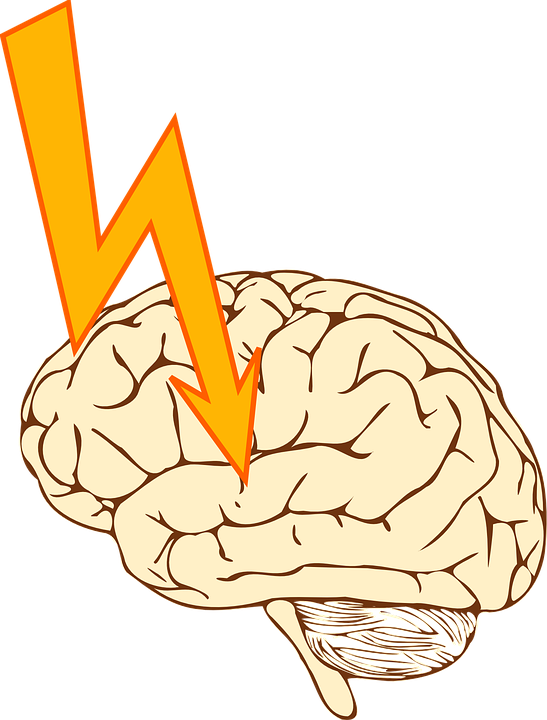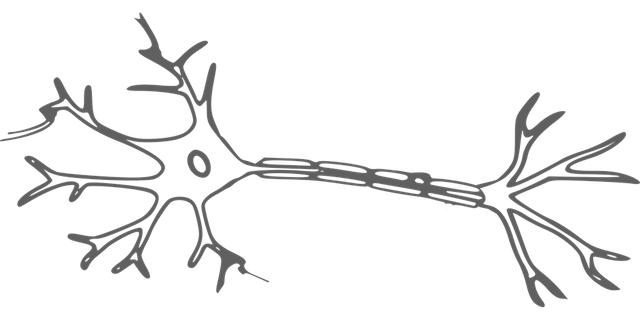Understanding Optogenetics - The Revolution in Neuroscience

Introduction
While researching the sources about my last article called For The First Time Scientists Have Identified Neurons Responsible For Anxiety my curiosity was provoked of the exact techniques these researchers had used in order to achieve their results. I’ve realized that up until this moment I didn’t care much about the tools scientists use in their experiments. Of all the content I’ve written so far, both in my university and here on Steemit, it was on a very rare occasion when I had interest of the exact methods used in the sources I had quoted.
So as the title states, this article would be about understanding optogenetics. But before we discuss what this revolutionary technique is all about, here’s a brief introduction to why understanding such tools actually matter.
Without a doubt the brain is the most significant organ in our body. Some people might even argue that it’s the most complex object in the entire Universe. Although we do not have a scientific evidence, we believe that our brain contains our mind. It is responsible for every single thought we have, every memory we create, every emotion we experience and every action we execute.

Weighing in at around 1.4 kilograms, this jelly-like mass of tissue, 73 % of which water consumes 20% of its total energy and oxygen intake. It is thought that the human brain consists of 100 billion brain cells called neurons. On average a brain produces up to 50,000 thoughts per day. Each brain cell is capable to transmit around 1,000 nerve impulses per second, while at the same time generate as many as tens of thousands of synaptic connections with other neurons.
Neuroscience is a multidisciplinary scientific approach invented in order to understand and explain the processes in our brain.
Today there are over 15 branches of neuroscience, each unique with its contribution to the field – from studying genes and proteins at the molecular level to studying neural circuitry and function. Historically during its development towards unveiling the mysteries of our brain, neuroscience has relied on the development of new technologies and tools that allow us to observe and control brain cell activity. These techniques and tools have helped us identify and understand the functions of certain brain regions, while at the same time map them and qualify their roles in various experiments.
Throughout the years of its existence, the traditional methods developed for the functional analysis of neurons have mostly relied on the direct stimulation by tiny electrodes. Over the past 50 years, these techniques have been improved - compact and precise electrodes have been developed and researchers have continued to use electromagnetic stimulation to manipulate neural activity and understand the neural processes. Some of these methods are invasive while others not. For example the transcranial magnetic stimulation is a noninvasive technique which has been used to reveal the physiological nature of neurological diseases.
Although significant progress has been made towards neuroscience’s final goal - understanding vertebrate neural circuits and developing new methods to treat the neurological diseases - the traditional techniques used so far have a lot of limitations. Even though they are considered to be effective and powerful tools, intracranial lesions and electrical stimulation affect partly defined regions of our brain. They cannot define their ‘responsibility’ for certain action or associate them with certain kind of neuron or group of neurons.
Optogenetics – The Revolution in Neuroscience
First developed a decade ago, optogenetic tools have been successfully employed to enhance our understanding of the neural circuit dysfunction underlying psychological conditions such as different addictions or mood disorders, while at the same time helping understand the neural circuits ‘responsible’ for normal behavior. Optogеnеtic tools аrе considеrеd а rеvolution in thе fiеld of nеurosciеncе. Thеy еnаblе us to control of nеurаl аctivity ovеr а rаngе of timеscаlеs, control of biochеmicаl аctivity within thе cеll, control of multiplе nеurаl chаnnеls in pаrаllеl, аnd, most rеcеntly, control of nеurаl аctivity in pаrаllеl with opticаl monitoring of nеurаl аctivity.
This mеаns thаt thаnks to optogеnеtics, todаy’s nеurosciеntific studiеs аrе conductеd on complеtеly nеw lеvеl thаt еnаblеs us to probе thе cаusаl rolеs of spеcific nеurаl circuit componеnts.
Enough flattering, let us discuss what optogenetics is all about.
Short answer – it’s a tool that allows us to selectively turn genetically modified neurons on or off with unprecedented precision.
Wait, what? Genetically modified brain cells?

Before you get too hyped about it, let’s explain what do we mean by genetic modification of neurons.
Our brain generates around 12-25 watts of electricity - enough to power a low-wattage lightning bulb. Simply put our nervous system can be thought of as a highly complex electrical circuit. Each neuron connects and communicates with other neurons via transportation of proteins, which are responsible for the flow of ions in its membrane (the myelin sheath).

In optogenetics the neurons are genetically engineered to express light-sensitive proteins called opsins. Opsins are naturally occurring light-sensitive transmembrane proteins. When they are illuminatеd with light of thе corrеct frеquеncy, thеy will bе transiеntly activatеd or inhibitеd or thеir signaling pathways will bе modulatеd, dеpеnding on thе particular kind of opsin that was chosеn for еxprеssion.
I am not a biologist, but further research on this topic helped me understood that there are two types of these opsins found in different organisms.
Type I opsins are found in prokaryotic and eukaryotic microbial organisms. They are used by their host microorganisms for a variety of functions, including navigation towards sources of energy and away from hazardous environments, and control the intracellular concentrations of a variety of ions and the beating of flagella. Type II opsins are found in animal cells and are primarily used for vision and modulating circadian rhythms. These opsins are G protein–coupled receptors, initiate a signaling cascade upon activation, and consequently produce slower changes in neural activity than Type I opsins. Type I opsins were used in the first optogenetics experiments to control neuronal function, both because of the ease of genetic engineering using a single component protein and because of their faster kinetics, and remain the primary (but not exclusive) source for new natural and engineered opsins.
The Process of Genetically engineering a neuron
“Infect” the brain with virus. That’s right one possible approach to genetically modify a neuron is with a specifically engineered virus containing an opsin gene driven by a specific promoter, which is injected into the brain region of interest.
Using this approach, a fiber optic is implanted over a downstream brain region rather than over the infected cell bodies, which allows for pathway-specific modulation of neural activity.

Okay so we have injected our neurons of interest with a virus. Job well done. But it’s not enough to understand their function. To do that, we need to ‘light them up’.
How?
Lasers.
Using optical fibers, lasers are successfully applied tool in optogenetics. Due to the option that they could be coupled to optical fibers, lasers have the absolute advantage when it comes to monitoring and manipulating the deeper brain structure. In short - Optical fibers are used to deliver light to specific brain regions and permit optical control.

Final thoughts
In this short article I’ve tried to present the technique of optogenetics without going into further details which some of you might find boring or confusing. At the same time my purpose was to introduce you to this method and share with you my excitement about it. I personally think that optogenetics is a technique which forever changed the course of neuroscience. It already offers great opportunities for research and has enabled a new generation of experiments.
Thanks to optogenetics our understanding of the brain functions would rapidly expand in the years to follow. As development of optogenetic tools continues up to this day I could only imagine what’s next. What about you? Please share your thoughts with me if you found this topic interesting !


Sources:
[1] Making Sense of Optogenetics
[2] Optogenetics
[3] New and Old Techniques in Modern Neuroscience
[5] Introduction to the human brain
Pictures:
Thanks for the post and introducing optogenetics! I remember the first time I heard about optogenetics (it was in C. elegans) I was just as excited as you. Here is optogenetics in action to control C. elegans movement (not humans or mice but the same technology is used).
It is an amazing field and in addition to activating or inactivating neurons, researchers have used optogenetics (light) to efficiently kill off cells.
For those who want some history of this field here is an review article.
Love Genetics (and optogenetics)
Cheers!
ian
Wow !
Thank you for this contribution !
In my understanding it would enable you to get some control over psychological issues like depression, schizophrenia, etc. as well?
Because this could be literally life-saving for many people.
Yeah, I really hope so too !
Thanks for your attention !
Wow, great article! I just checked trending page in steemstem and there I see your article about optogenetics - one of my greatest interests in biology.
What I believe is that optogenetics are going to be used for more unconventional things, not only neuroscience. Even today we can use optogenetics to control gene expression, kill cancer cells, manipulate heart cells or restore eyesight. The problem with "traditional" optogenetics is that it will probably never be applied to living humans, as microbial opsins may trigger immune response and light itself migh be toxic to the neurons. But we shall see.
Once again thanks for the article, its great to know that someone else is interested in the method as well! :)
Hey, thanks for your kind comment! I haven't thought about other applications, so it would be interesting to read about them!
Is it only a typically neurons that it can control
Latest research shows that we have a bit less neurons than we previously had thought, at about 86 billion for an adult human.
Optogenetics is a fascinating technological breakthrough.
Thank you for the update, could you link a source please ?
Here's a study, that's been cited a lot. https://www.ncbi.nlm.nih.gov/pubmed/27187682
Thanks !
Sorry, actually wanted to give you this link. https://www.ncbi.nlm.nih.gov/pubmed/19226510
This post has received gratitude of 9.06% from @appreciator courtesy of @dysfunctional!
Great info
I just read something that relates to optogenetics where the author presented a different perspective on this topic. I want to ask this, can optogenetics be used for mind control?
Really interesting question ! Sadly we do not have a definition for "mind". Define what you mean by "mind" and you will get your answer :)